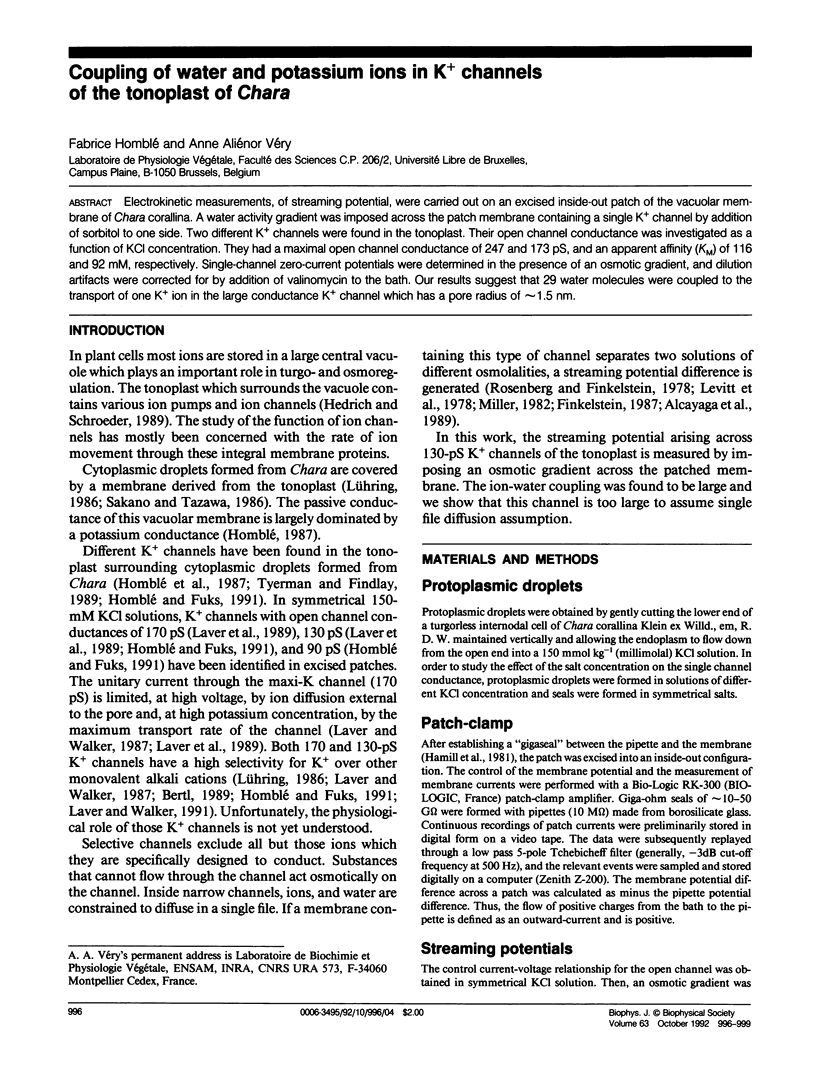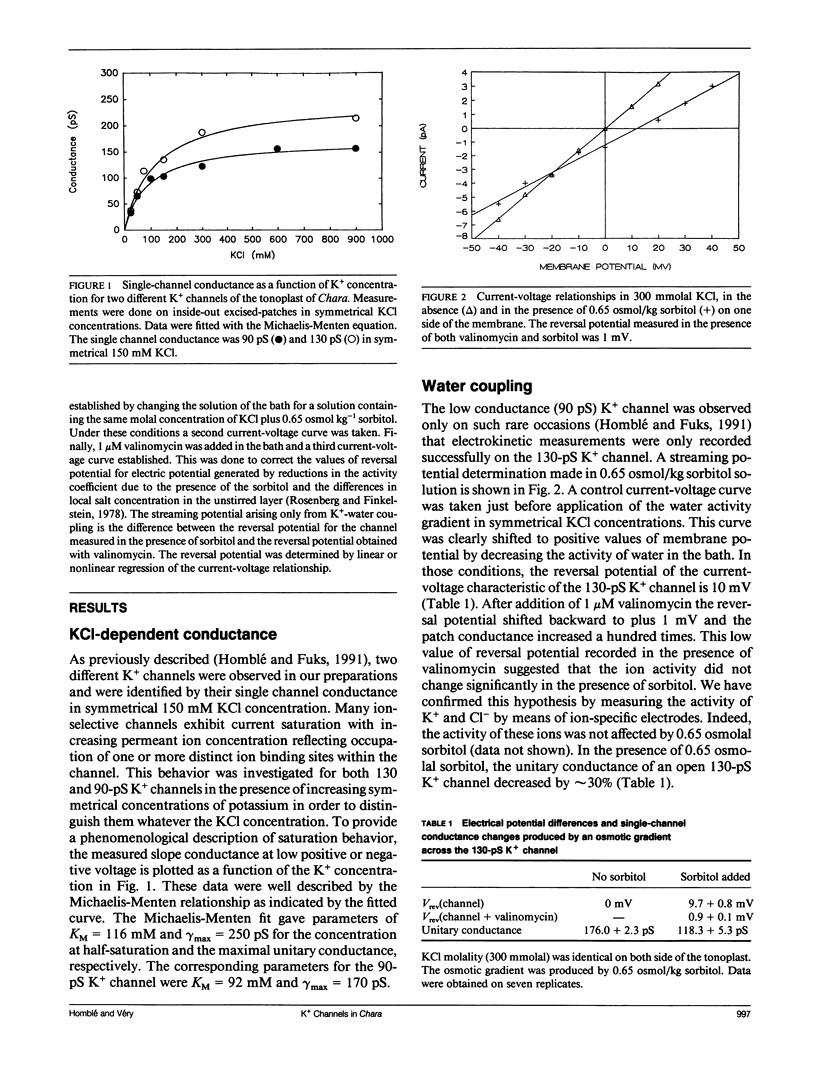Abstract
Electrokinetic measurements, of streaming potential, were carried out on an excised inside-out patch of the vacuolar membrane of Chara corallina. A water activity gradient was imposed across the patch membrane containing a single K+ channel by addition of sorbitol to one side. Two different K+ channels were found in the tonoplast. Their open channel conductance was investigated as a function of KCl concentration. They had a maximal open channel conductance of 247 and 173 pS, and an apparent affinity (KM) of 116 and 92 mM, respectively. Single-channel zero-current potentials were determined in the presence of an osmotic gradient, and dilution artifacts were corrected for by addition of valinomycin to the bath. Our results suggest that 29 water molecules were coupled to the transport of one K+ ion in the large conductance K+ channel which has a pore radius of ∼1.5 nm.
Full text
PDF



Selected References
These references are in PubMed. This may not be the complete list of references from this article.
- Alcayaga C., Cecchi X., Alvarez O., Latorre R. Streaming potential measurements in Ca2+-activated K+ channels from skeletal and smooth muscle. Coupling of ion and water fluxes. Biophys J. 1989 Feb;55(2):367–371. doi: 10.1016/S0006-3495(89)82814-0. [DOI] [PMC free article] [PubMed] [Google Scholar]
- Barry P. H., Hope A. B. Electro-osmosis in Chara and Nitella cells. Biochim Biophys Acta. 1969 Oct 14;193(1):124–128. doi: 10.1016/0005-2736(69)90065-0. [DOI] [PubMed] [Google Scholar]
- Gutknecht J. Membranes of Valonia ventricosa: apparent absence of water-filled pores. Science. 1967 Nov 10;158(3802):787–788. doi: 10.1126/science.158.3802.787. [DOI] [PubMed] [Google Scholar]
- Hamill O. P., Marty A., Neher E., Sakmann B., Sigworth F. J. Improved patch-clamp techniques for high-resolution current recording from cells and cell-free membrane patches. Pflugers Arch. 1981 Aug;391(2):85–100. doi: 10.1007/BF00656997. [DOI] [PubMed] [Google Scholar]
- Homblé F. A Tight-Seal Whole Cell Study of the Voltage-Dependent Gating Mechanism of K-Channels of Protoplasmic Droplets of Chara corallina. Plant Physiol. 1987 Jun;84(2):433–437. doi: 10.1104/pp.84.2.433. [DOI] [PMC free article] [PubMed] [Google Scholar]
- Homblé F., Ferrier J. M., Dainty J. Voltage-Dependent K-Channel in Protoplasmic Droplets of Chara corallina: A Single Channel Patch Clamp Study. Plant Physiol. 1987 Jan;83(1):53–57. doi: 10.1104/pp.83.1.53. [DOI] [PMC free article] [PubMed] [Google Scholar]
- Laver D. R., Walker N. A. Activation by Ca2+ and block by divalent ions of the K+ channel in the membrane of cytoplasmic drops from Chara australis. J Membr Biol. 1991 Mar;120(2):131–139. doi: 10.1007/BF01872396. [DOI] [PubMed] [Google Scholar]
- Levitt D. G., Elias S. R., Hautman J. M. Number of water molecules coupled to the transport of sodium, potassium and hydrogen ions via gramicidin, nonactin or valinomycin. Biochim Biophys Acta. 1978 Sep 22;512(2):436–451. doi: 10.1016/0005-2736(78)90266-3. [DOI] [PubMed] [Google Scholar]
- Miller C. Coupling of water and ion fluxes in a K+-selective channel of sarcoplasmic reticulum. Biophys J. 1982 Jun;38(3):227–230. doi: 10.1016/S0006-3495(82)84552-9. [DOI] [PMC free article] [PubMed] [Google Scholar]
- Rosenberg P. A., Finkelstein A. Interaction of ions and water in gramicidin A channels: streaming potentials across lipid bilayer membranes. J Gen Physiol. 1978 Sep;72(3):327–340. doi: 10.1085/jgp.72.3.327. [DOI] [PMC free article] [PubMed] [Google Scholar]
- Wayne R., Tazawa M. Nature of the water channels in the internodal cells of Nitellopsis. J Membr Biol. 1990 Jun;116(1):31–39. doi: 10.1007/BF01871669. [DOI] [PubMed] [Google Scholar]


